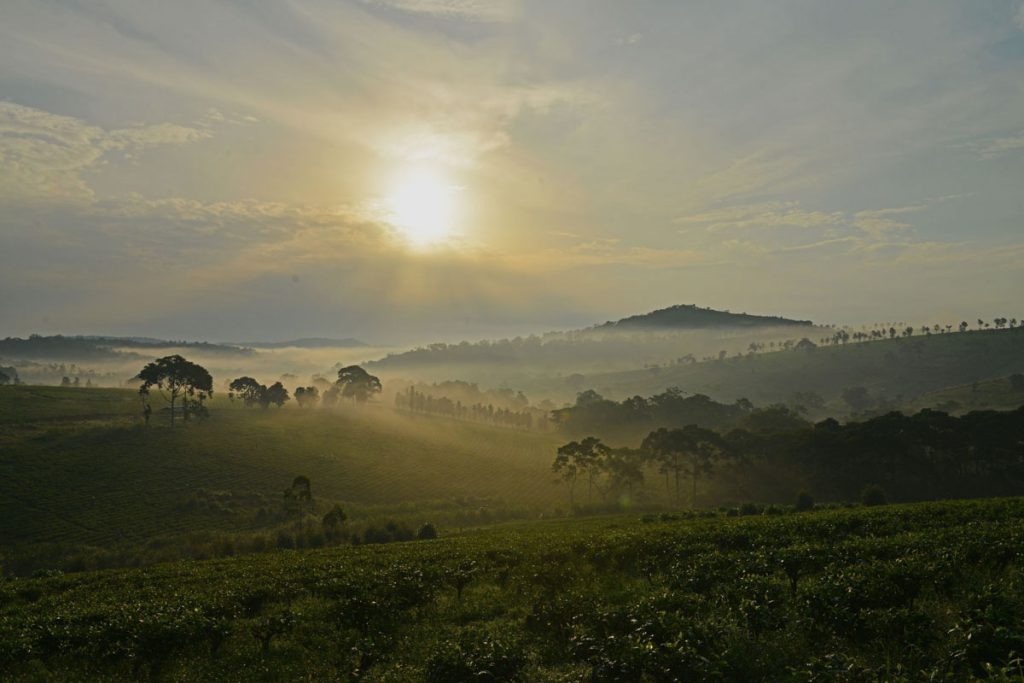The Weather and Climate of Uganda
Is Uganda your dream safari destination and you wondering what its weather or climate is like? Well, while most holiday makers on African safari regard Uganda as an all year round destination, knowing what its weather and climate are is one most significant thing any enthusiastic traveler should do before embarking on actual trip.
For starters, Uganda lies suitably a stride equator and it is of no doubt that its weather conditions are very favorable one reason it features among a few unique most sought after safari destinations in Africa.
The Weather and Climate of Uganda
Its weather conditions range from warm especially in the lowland areas to cool in the highlands of the southwestern part. Uganda’s temperature range is about 29 degrees Celsius with its maximum ranging from 18 to 31 degrees Celsius and the minimum temperatures ranges from 15 to 23 degrees Celsius. This however varies from one region/part to another and experiences mainly tropical climate.
When planning for a safari to Uganda, first it is important that you get to know when it is best for you to pay a visit to this stunning safari destination.
That said, if you plan to explore the natural wonders that this magical country has in offer to its world travelers then take note of these two seasons-the dry and wet season. Note, each season has its own advantages and disadvantages.
The wet which also best known as the rainy season or off season usually kick starts from March to May and it is during this period that Uganda experiences the longest rainy season whereas the short season normally starts from October to November.
Depending on what your travel needs are in Uganda, a visit to this country during wet season means you will encounter some challenge especially if your aim is to track mountain gorillas or chimpanzee.
The wet season usually comes with plenty of rainfall and the habitat becomes muddy and slippery. Tracking gorillas during this season can be challenging as the steep slopes can be slippery but the advantage with it is that it is when there plenty of food for these creatures to depend on and they keep within the nearby area and this may shorten your distance while searching for them.
The Weather and Climate of Uganda
On the other hand, the dry season in Uganda begins from June to September and from December to February. Note, rainfall amount received in Uganda ranges between 500 mm and 2500 mm with humidity of about 70-100%. Usually, rainfall pattern favors two planting and harvesting seasons every year without necessarily using irrigation. 34% of Uganda’s terrain features mainly wetlands-lakes, rivers and swamps.
And what makes it popular besides wildlife and primates, is its fertile soils and ideal weather conditions that have always been modified by expansive Lake Victoria that features as one of the world’s largest fresh water lake.
Due to ideal weather and climatic conditions, Uganda is remarkably one of a few most ideal tourist destinations that you can pay a visit at any time of the year.
Its favorable weather and climatic conditions favor wildlife safaris as well as mountain gorilla adventures and other primate safaris. Gorilla treks for instance are only ideal in Bwindi Impenetrable Forest National Park or Mgahinga National Park, southwestern Uganda. The two parks straddles at a border with the D. R. Congo.
While on safari in Uganda, do not miss to catch a glimpse at big game-elephants, leopards, lions plus the rare tree climbing lions, buffaloes, rhinos, antelope families, bird species and many others. However, most tourists prefer traveling during dry season the fact that it is characterized by low rainfall amount. In most cases, about 1000-2000 mm of rainfall is received each year.
Most importantly, temperatures in Uganda do vary depending of district or towns and can be seen here. Kampala stands at altitude of about 1190 meters and it comes with temperature range of about 27 degrees Celsius and in January, temperatures can rise up to 30 degrees Celsius. May is usually the wettest month in Kampala and the driest is July.
Entebbe on the other hand, straddles at elevation of about 1145 meters and high temperatures range by 2 degrees Celsius all year round. The mean temperatures experienced are within 26 degrees Celsius with low temperatures range between 16 and 18 degrees Celsius throughout the year. As you head off to Fort Portal, its altitude is about 1540 meters and features mean temperature of 25 degrees Celsius.
Kabale stands at altitude of about 1950 meters and its daily mean temperatures rise up to 23 degrees Celsius and the low temperatures ranges from 9 to 11 degrees Celsius.
Gulu-this stands at elevation of about 1110 meters and daily mean temperature of about 29 degrees Celsius. The low temperatures range between 16 and 18 degrees Celsius throughout the year.
Masindi stands at altitude of approximately 1145 meters and the low temperatures range between 12 and 13 degrees Celsius all year round.
Jinja stands at elevation of about 1140 meters and its temperature rise between 14 and 15 degrees Celsius. Jinja features tropical climate with average rainfall amount of 1317 mm.
In conclusion, Uganda feature the most ideal weather and climatic conditions and a visit to this safari destination can be done at any time of the year. Uganda mainly experiences tropical climate with two significant seasons-the dry and wet which you have to put into consideration before embarking on actual trip.

